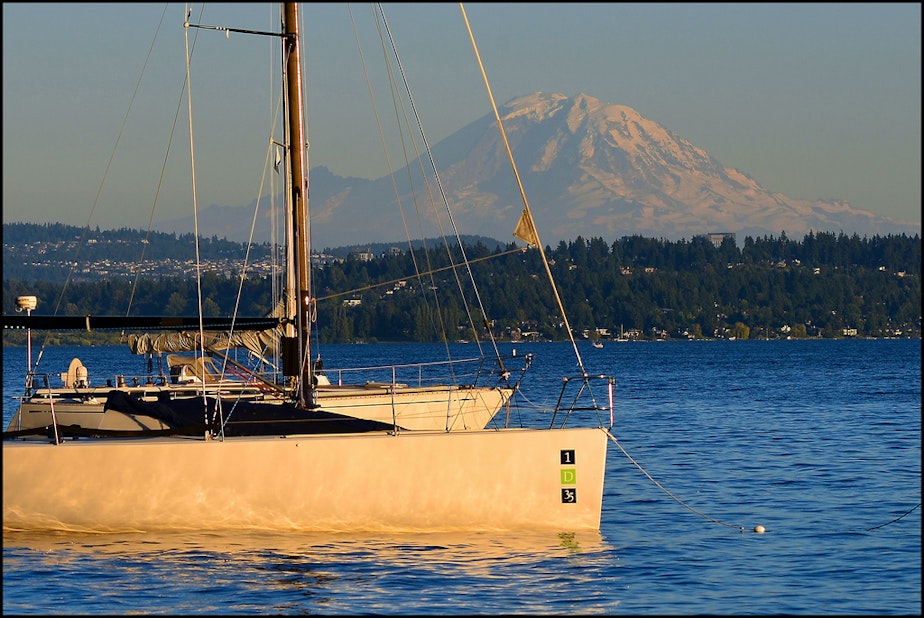Lake Washington is heating up because of climate change

Average annual temperatures in Lake Washington, which sits between Seattle and the Eastside, continue to rise.
Scientists say Lake Washington is already starting to show effects from climate change.
Last year the average annual temperature was just over 51 degrees Fahrenheit, up from 47.9 degrees in 1963, according to data collected by University of Washington scientists.
Still seem chilly to you? Ask sockeye salmon or those tiny water fleas how they feel about it.
Warmer water could cause cascading changes through the lake’s ecosystem, with problems for fish, tiny organisms like those water fleas, which are named Daphnia, and even you and your dog.
[Check out this gif of the historical temperature of Lake Washington using King County buoy data.]
Warmer water in the spring means some algae bloom earlier, but the Daphnia that eat those algae get there too late.
Sponsored
Those organisms don't get the memo that the algae that they're supposed to eat have already come and gone, said Curtis DeGasperi, a hydrologist with King County.
Fewer water fleas means less fish food. Warmer water could also lead to more, troublesome bacteria known as blue-green algae, which release toxins into the water, DeGasperi said.
Take a dip during an algal bloom and you could get a rash. Your pooch could get sick if he or she laps up contaminated water.
The water is expected to get at least one degree warmer on average over the next 30 years.
“At the very least, changes in Lake Washington temperatures serve as a sentinel of regional climate warming,” Daniel Schindler, a University of Washington researcher, wrote by email. He is in Alaska this summer, researching salmon.
The warming is caused by both warmer air temperatures, directly, and indirectly by more heat moving through the North Pacific Ocean, Schindler said. Warmer waters cause problems for Chinook and sockeye salmon, which migrate through Lake Washington and need cool water.
Sponsored
Invasive walleye and smallmouth bass, which now make the lake their home, thrive in warm water and like to eat salmon.
“For juvenile salmon, warmer temperatures in the Ship Canal or in the surface of Lake Washington create both physiological stress and also increase the risk of being eaten by exotic fish species,” Schindler said. “Neither is good for salmon.”




